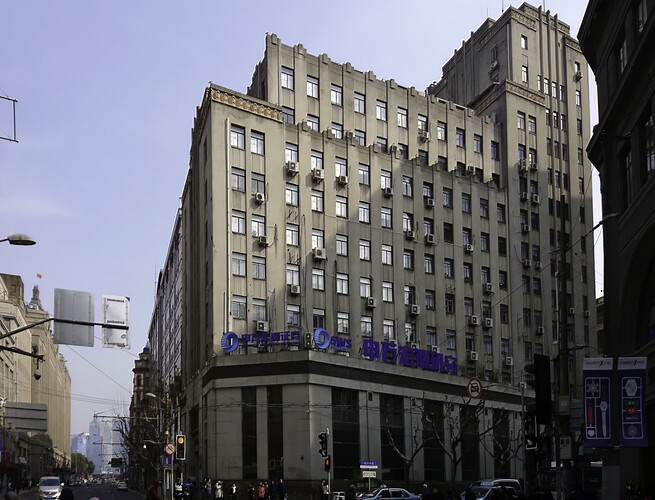Very sorry for the hesitation!
OK. The downloaded file that you linked to is a PNG - something that PhotoLab cannot handle. So I converted it to JPG, but this is definitely not the original file.
Ah, sorry for the circumstances. I must have mixed up the picture.
https://forum.dxo.com/uploads/default/original/3X/8/d/8d4afc07d4f5515dc70bdbbfb1776ed200caf07f.jpeg
Showing the grid shows that all the buildings are now properly vertical, although, due to the perspective, they look like they are wider at the top than the bottom.>Does that help?
Yes, but they are not. They only look like it. But why? What lines / proportions cause that?
Now the main building looks more “normal” but, of course, the buildings at the edge will still look a bit canted in.
But these lines still are quite skew:
https://i.imgur.com/O3wMVve.jpeg
So the next action:
This is to be expected and can only be corrected by forcing parts of the image using the ReShape tool like this…
seems to straighten the lines very much:
https://i.imgur.com/58dse4k.jpeg
Does that help?
Yes, very much, very many thanks! The buildings still look quite ugly. These (kind of) images obviously cannot be saved, so I can just throw them away. So that means I simply tilted the camera way too much.
You can always try the magic wand to automatically try and do the right thing…
… but the resulting changes mean that you will be missing an awful lot of sky…
And it still isn’t quite right.
https://i.imgur.com/J4S0GPz.jpeg
I guess the automatic works, especially with such strong distortions, only for a rather imprecise adjustment. May be it is only usable for slight adaptions. If at all.
Thank you very much for trying and showing me!
When we look up, we see converging lines, but we know that they should be parallel. Our brain mixes the two ingredients to make things look like expected…within certain bounds.
But our “brain” knows as well that we look at an image, I would think, so it knows there is nothing to mix, it just is an image. And the same image above taken with a vertical image plane would not cause such (odd) view. We or I would think it is like it should be. And why do we see other images “correctly”? And movies. And feel them as they are in reality. According to that explanation, shouldn’t we see all the images wrong, or at least many? Like those of all well-known painters?
When we walk a path, the borders of the path converge too, and our brain accepts it, because we look horizontally.
Yes, and we had the same view, the correct perspective if we saw the same path on a photo. Or not?
There are limits to what we should do with perspective corrections. Imagine shooting a recessed window from one side and then correcting the perspective in order to make the top and bottom parts parallel. Due to the recess, we’d see one side of the window frame and not the other. We’ll notice that something is wrong with that image…
Yes, that sounds plausible. So these wrong perspectives, lines, proportions let the image, building look wrong.
We also use 5" x 4" LF cameras with movements. Here’s a couple of shots of tall buildings with the film plane vertical and the front raised…
Architecture 4
Architecture 3
You can see in these pictures that the point of view is on the ground when taking the pictures, I assume. So if they were taken from a higher point they might look better? But the images look right, as I like it.
I first aligned the right side with the middle using the Force Parallel tool then exported as a TIFF. Then I used the FP tool on the new file to align the left side with the other two. The “wider at the top” and “left side leaning in” illusions are still present but all three lines are now vertical.
https://i.imgur.com/7PXOdkN.jpeg
But the line with the arrow is not, I would think. The other lines (almost) seem to be straighten but do not look straighten at all (because of the optical illusion obviously).
Thank you very much!
